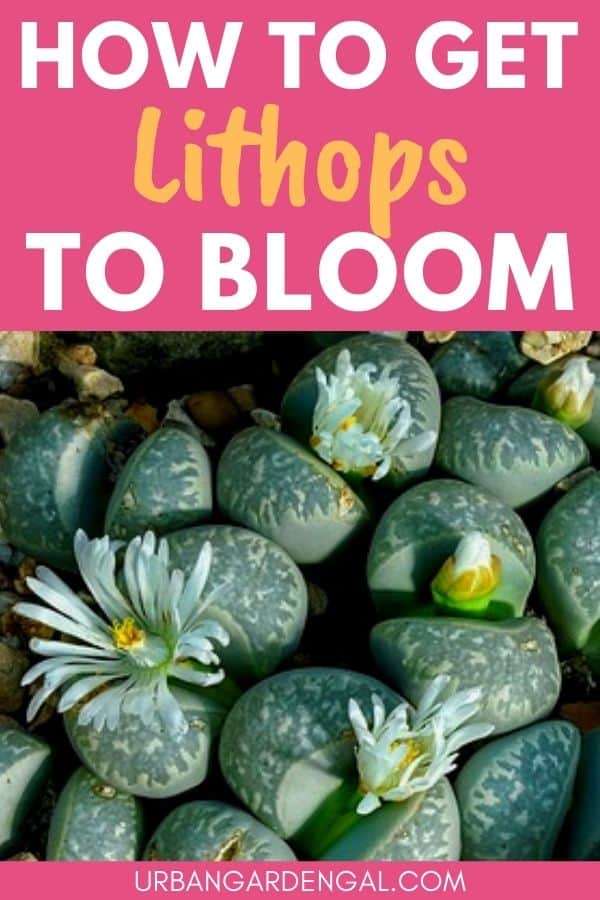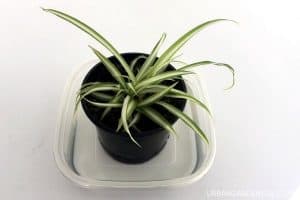Lithops, also known as living stones, split rocks or pebble plants, are small, unusual succulents that thrive in hot, dry weather.
They’re normally grown for their round fleshy leaves but with the right care they’ll reward you with a stunning display of flowers in late summer or fall.
In this article I’ll share my tips for getting lithops plants to flower.
This post contains affiliate links. Please read the disclosure for more info.
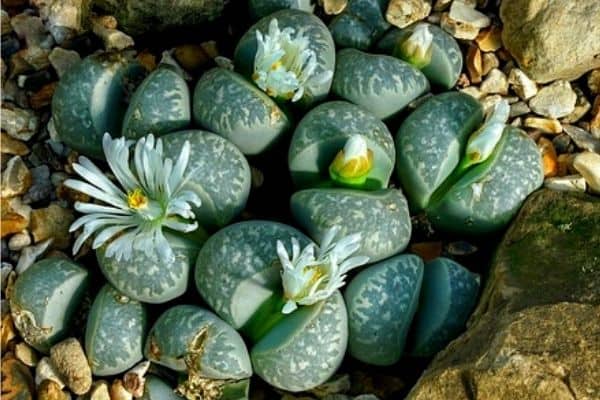
Lithops are popular succulent plants that are easy to care for and very low maintenance.
Lithops flowers
Each lithops plant has two thick, fleshy leaves with a slit in the middle, which is where the new leaves and flowers emerge from.
The flowers can be yellow, white or orange and measure about an inch (2.5 cm) in diameter.
Sometimes the flowers are larger than the plant itself.
Lithops flowers open up in the afternoon on sunny days and close again late in the afternoon.
Some lithops flowers are scented while others have no scent.
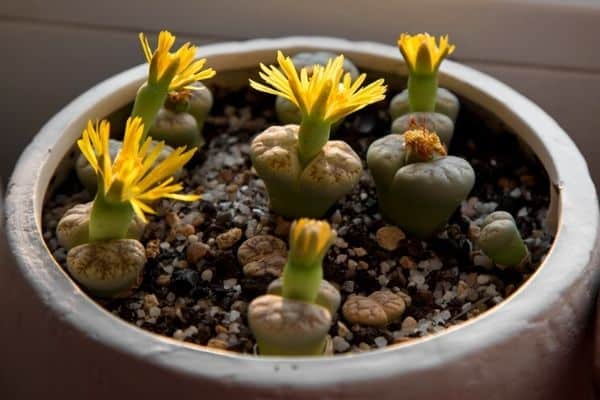
When do lithops plants bloom?
Lithops begin to bloom in late summer or early fall, but some varieties flower in spring and even winter.
Why aren’t my lithops flowering?
Lithops are native to Namibia and South Africa where the conditions are hot and dry, so they bloom best in conditions that are similar to their natural environment.
Some common reasons your lithops may not be blooming include:
The plant is too young
Lithops only start producing flowers when the plants are at least three years old.
Some varieties won’t begin blooming until they’re five years old, so if you’ve grown your plants from seed you’ll have to be patient.
Not enough light
Lithops plants grow best in a spot that receives at least five hours of direct sunlight each day.
Situating your plants on a sunny windowsill or underneath a grow light will give them the best chance of producing beautiful blooms.
Too much water
Lithops should be watered very sparingly, even less than other succulents, otherwise they will start to rot.
If you live in an area with lots of rainfall you’ll have better success growing lithops indoors.
Lithops can be watered while they’re flowering up until the flower starts to wither.
Lithops go dormant once they’ve finished flowering, so avoid watering them at this time.
Also, don’t be tempted to water the new leaves when they first start to appear.
Wait until the old leaves have dried up completely before you start watering again.
Optimal temperature
Lithops prefer warm, dry conditions for optimal growth and flowering so they’ll do best when temperatures are between 65°F to 90°F (18°C to 32°C) for most of the year.
The temperature should not fall below 50°F (10°C), so if you live in a cool climate you’ll need to keep your lithops in a heated room or greenhouse during the winter months.
Indoor lithops plants should be situated away from cold drafts and air conditioning.
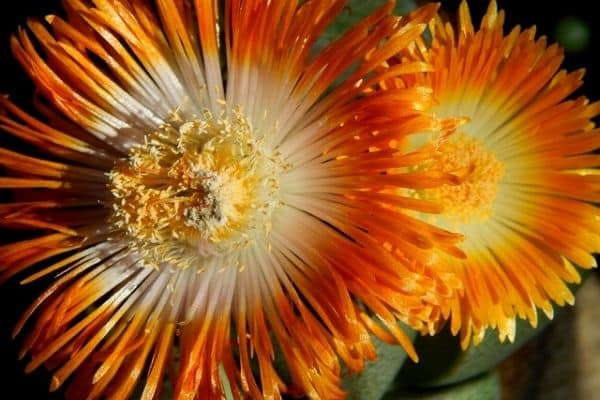
What happens after lithops flower?
Lithops plants produce seeds from the spent flowers.
Lithops are reliant on insects for pollination so you can place your plants outdoors for a few days while they’re blooming to allow the insects to pollinate them or do it yourself using a small paintbrush.
The seed capsule forms as the flower fades.
Once water hits the seed capsule it will open and spread the seeds up to 12 inches (30 cm) away from the plant.
How long do lithops flowers last?
The flowers last for about two weeks.
Lithops varieties
Lithops olivacea are native to South Africa and are mostly olive green in color but they can also have red, yellow, gray or brown fleshy leaves.
The flowers are bright yellow with a white center.
Lithops salicola are native to Namibia and South Africa.
They’re gray with white flowers and they’re a popular choice for houseplants because they’re more tolerant to overwatering than other lithops varieties.
Lithops karasmontana are named after the Great Karas mountains in Namibia.
They’re gray in color with a mottled brown pattern and white flowers that appear in fall. [1]
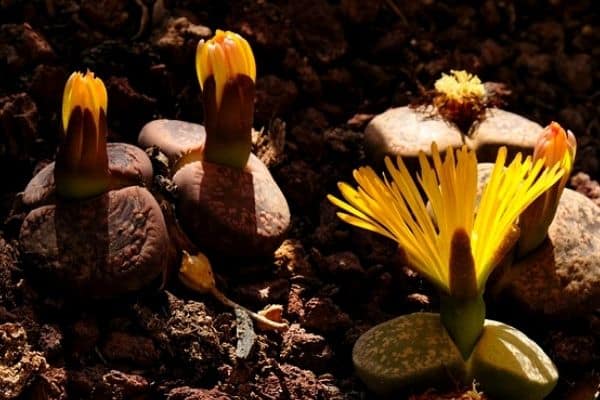
RELATED ARTICLES
So there are my tips for encouraging lithops plants to bloom.
With the right care your lithops may reward you with stunning flowers each year for the life of the plant, which can be 40 to 50 years!
Have you had success with lithops flowers? Let me know in the comments below.
Are you on Pinterest? I have boards dedicated to Indoor Gardens and Succulents that you may enjoy. You can also find me on Facebook.

